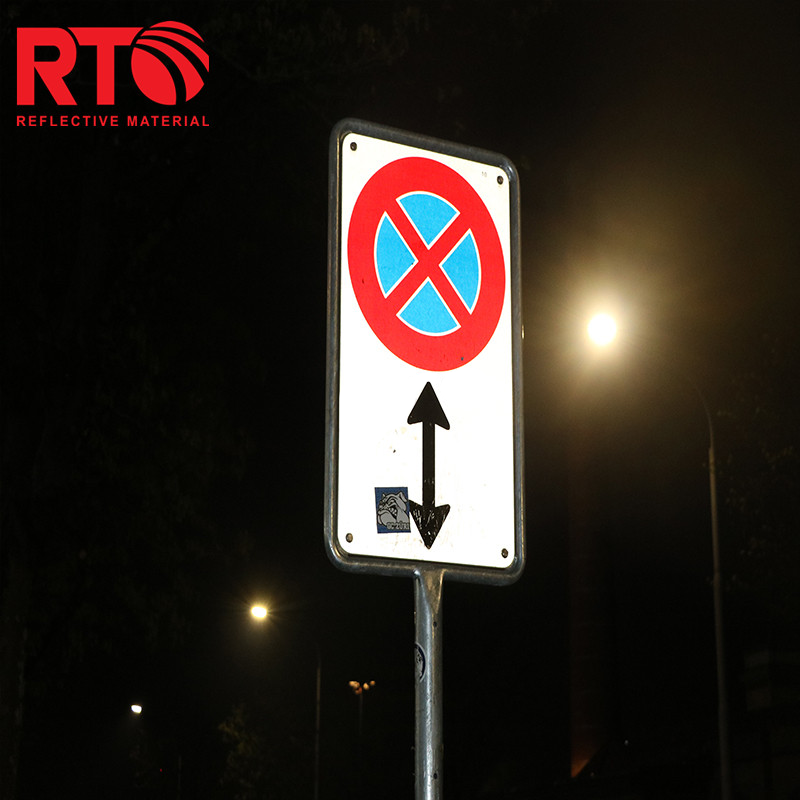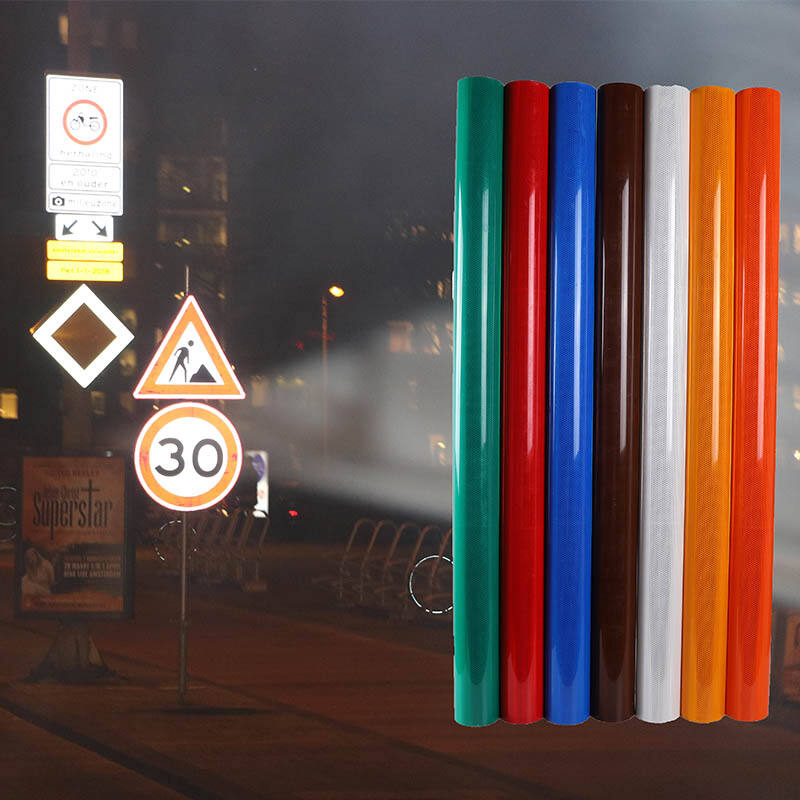Why Are High-Quality Traffic Sign Materials Essential for Public Safety?
The Lifesaving Role of High-Quality Traffic Sign Materials
Visibility Enhancement in Low-Light Conditions
The significance of reflective properties in traffic signs cannot be overstated as they elevate visibility during nighttime and foggy conditions, which are often hazardous. Reflective tape and glow-in-the-dark tape play crucial roles in enhancing the visibility of signs, thus preventing accidents. Research indicates that poor visibility is behind numerous traffic mishaps, and incorporating high-quality materials effectively mitigates these risks. For instance, innovative materials like dot reflective tape have revolutionized nighttime visibility by reflecting headlights back to the driver, ensuring they notice signs well in advance and can react appropriately to road conditions. This proactive approach is essential for preventing avoidable accidents and ensuring safer driving environments in low-light settings.
Reducing Collisions Through Superior Reflectivity
High reflectivity levels in traffic signs are pivotal in reducing collisions, as supported by numerous traffic safety reports. For example, studies have reported a marked reduction in accidents with the deployment of reflective signage at high-risk intersections, where long-term data indicates lower accident rates. The effectiveness of various reflective materials, such as anti-slip tape on road surfaces and reflector tape for visibility, is evident in accident reduction strategies. These materials are especially beneficial on highways and busy urban intersections where quick decision-making is required. By ensuring that drivers have ample warning through enhanced reflectivity, we can significantly diminish the incidence of traffic collisions, safeguarding lives and vehicles alike.
Long-Term Durability vs. Frequent Replacements
Investing in durable traffic sign materials presents a noteworthy cost-benefit advantage over the frequent replacement of inferior options. While initial costs for high-quality, long-lasting materials may be higher, they are offset by reduced maintenance expenses and replacement needs, a position supported by numerous economic case studies. Additionally, environmental benefits are realized due to less frequent waste and resource usage, highlighting the sustainability factor of high-quality materials. Alongside these benefits, many advanced materials come with comprehensive warranty options that cover long-term performance, ensuring reduced maintenance obligations. In essence, when choosing traffic sign materials, prioritizing durability and quality translates to wiser, more sustainable long-term investments.
Essential Properties of Safety-Focused Signage Materials
Weather Resistance for Extreme Climate Performance
Signage durability is crucial, especially in extreme weather conditions, as it directly influences road safety. To withstand environments ranging from torrential rain to scorching heat, signage materials need to exhibit outstanding weather resistance. Materials such as advanced polymers and coated metals are often preferred due to their robust performance under harsh conditions. A study on weather-related signage failures showed increased failure rates in areas prone to severe weather conditions, underscoring the necessity for resilient materials. Innovations, like UV-resistant coatings, are now minimizing the effects of fading and weather degradation over time, ensuring the longevity and legibility of traffic signs even in the most challenging climates.
Anti-Slip Tape Integration for Worker Safety
The integration of anti-slip tape on worksite signage is becoming essential to enhancing worker safety. Slip hazards are a significant concern in industrial and construction settings, and statistics reveal that over 26% of workplace accidents are due to slips and falls. Implementing anti-slip tape—which provides an extra layer of safety around signage—can significantly mitigate these risks. Products like grit tapes are ideal for ensuring secure footing on metal and wood surfaces commonly used in signage areas, providing a practical solution for slip hazards. By incorporating these tapes, businesses can uphold worker safety standards and reduce accident rates effectively.
Impact Resistance Against Vandalism
Choosing impact-resistant materials for signage is crucial in countering vandalism and ensuring the long-term usability of signs. Vandal-proof materials, such as reinforced composites, play a vital role in deterring and minimizing damage from intentional misuse. Cases where durable materials were employed show a marked decrease in incidents of vandalism, demonstrating their effectiveness. Moreover, adopting a layered approach in signage design—combining tough outer layers with easily replaceable softer inner sections—can bolster resistance and reduce replacement costs. This strategy not only prolongs the lifespan of signage but also preserves its functional integrity in high-risk areas.
Cutting-Edge Traffic Sign Solutions from RTLITE
Metallized Diamond Grade Waterproof Reflective Tape
The metallized diamond grade reflective tape by RTLITE represents a significant innovation in high visibility and waterproofing for road signage. Its design ensures exceptional visibility, even in low-light conditions, making it a preferred choice for safety applications. This reflective tape is particularly beneficial in various scenarios ranging from highways to construction zones, providing reliable adherence even under adverse weather conditions. Recent testimonials have highlighted its robustness, with users noting significant improvements in night-time visibility and durability over time, validating its effectiveness in enhancing road safety.
High-Intensity Prismatic Reflective Sheeting
High-intensity prismatic reflective sheeting is a groundbreaking technology used extensively in road signage due to its superior reflective capabilities. This technology focuses on the efficient return of light to its source, significantly enhancing visibility. Comparative studies have shown that this prismatic sheeting outperforms standard reflective materials, particularly in complex traffic environments. The installation process is critical to maximizing its performance, and following best practices ensures that the reflective sheeting remains effective over the long term.
Self-Adhesive Diamond Grade HIP Road Signs
The self-adhesive diamond grade HIP (High-Intensity Prismatic) road signs offer unmatched ease of installation, making them a cost-effective solution for modern traffic management. Unlike traditional mounted signs, self-adhesive types do not require extensive hardware or preparation. This method ensures quick setup with minimal labor investment, perfect for temporary or rotating signage needs. These signs provide durable reflectivity that ensures long-term visibility and endurance under challenging environmental conditions, enhancing both safety and cost efficiency.
Commercial Reflective Vinyl for Urban Applications
In urban environments, commercial reflective vinyl is essential for enhancing signage visibility and safety amidst bustling activity. The types of vinyl best suited for these areas are designed to withstand high traffic while offering vibrant, clear displays. Urban signage faces unique challenges like ambient lighting and clutter, but reflective vinyl materials counteract these issues by providing bright, eye-catching illumination. Insights from urban planners emphasize the importance of using quality materials to ensure public safety and effective communication.
EGP Engineer Grade Retroreflective Solutions
EGP Engineer Grade materials are specifically designed to meet stringent regulatory requirements, offering a reliable solution for road signage compliance. These materials are crafted to exceed industry standards, providing a high level of brightness and durability that withstands the test of time and elements. Engineering experts have praised their consistent performance, noting their adaptability across various signage needs, enabling jurisdictions to efficiently comply with safety standards while ensuring clarity and visibility.
Compliance and Innovation in Signage Standards
Meeting MUTCD Reflectivity Requirements
Understanding the MUTCD standards is essential for ensuring traffic safety, as they dictate the reflectivity requirements for road signs. These standards have evolved over the years to enhance the visibility and effectiveness of signage, thereby reducing accidents and improving overall road safety. Historically, the MUTCD has progressed from basic standards to incorporating advanced materials like reflective sheeting to comply with diverse and modern needs. Today's materials, such as high-intensity prismatic (HIP) sheeting, align perfectly with these standards, offering superior visibility in various lighting conditions, which is crucial for improving driver reaction times and ensuring roadway safety.
Glow-in-the-Dark Tape for Emergency Scenarios
The application of glow-in-the-dark tape in emergency scenarios has proven to be invaluable, providing crucial visibility during power outages and in low-light conditions. Research indicates that glow-in-the-dark technology outperforms traditional reflective methods by offering sustained luminescence without the need for an external light source. Its practical applications include marking exits, pathways, and other essential safety features, thereby enhancing preparedness for emergencies. Recent innovations in this technology have improved its longevity and brightness, making it an effective tool in critical situations.
Global Certification Processes Demystified
Globally certifying traffic signage materials is a complex process but vital for ensuring safety and reducing liability. These certifications confirm that materials meet stringent safety standards and can perform consistently across various regions. Experts suggest that having globally certified signage materials not only enhances road safety but also empowers stakeholders by reducing potential liabilities. Certified materials ensure compliance with international standards, promoting uniformity and reliability in traffic management systems worldwide.

 EN
EN











































 ONLINE
ONLINE